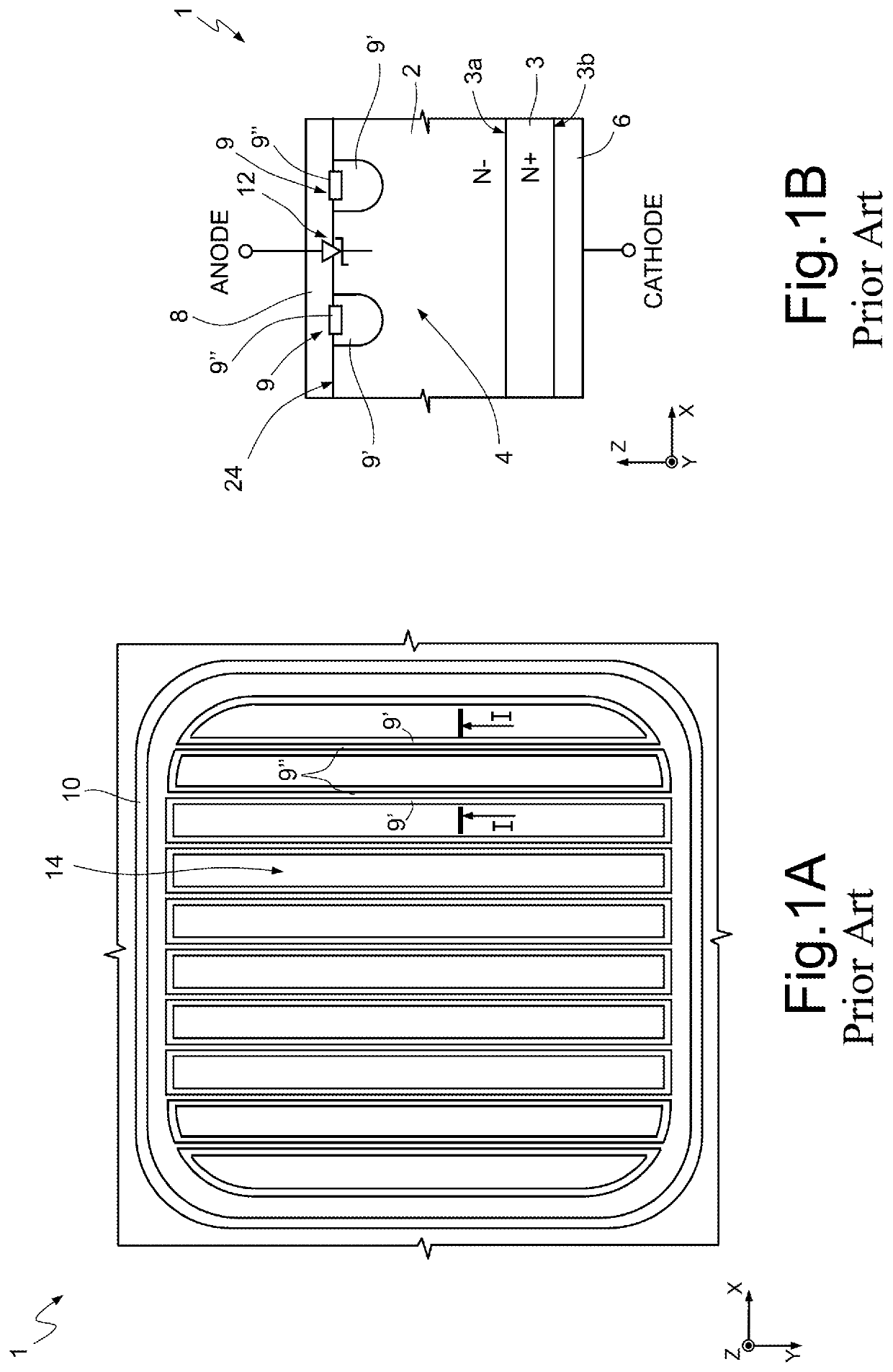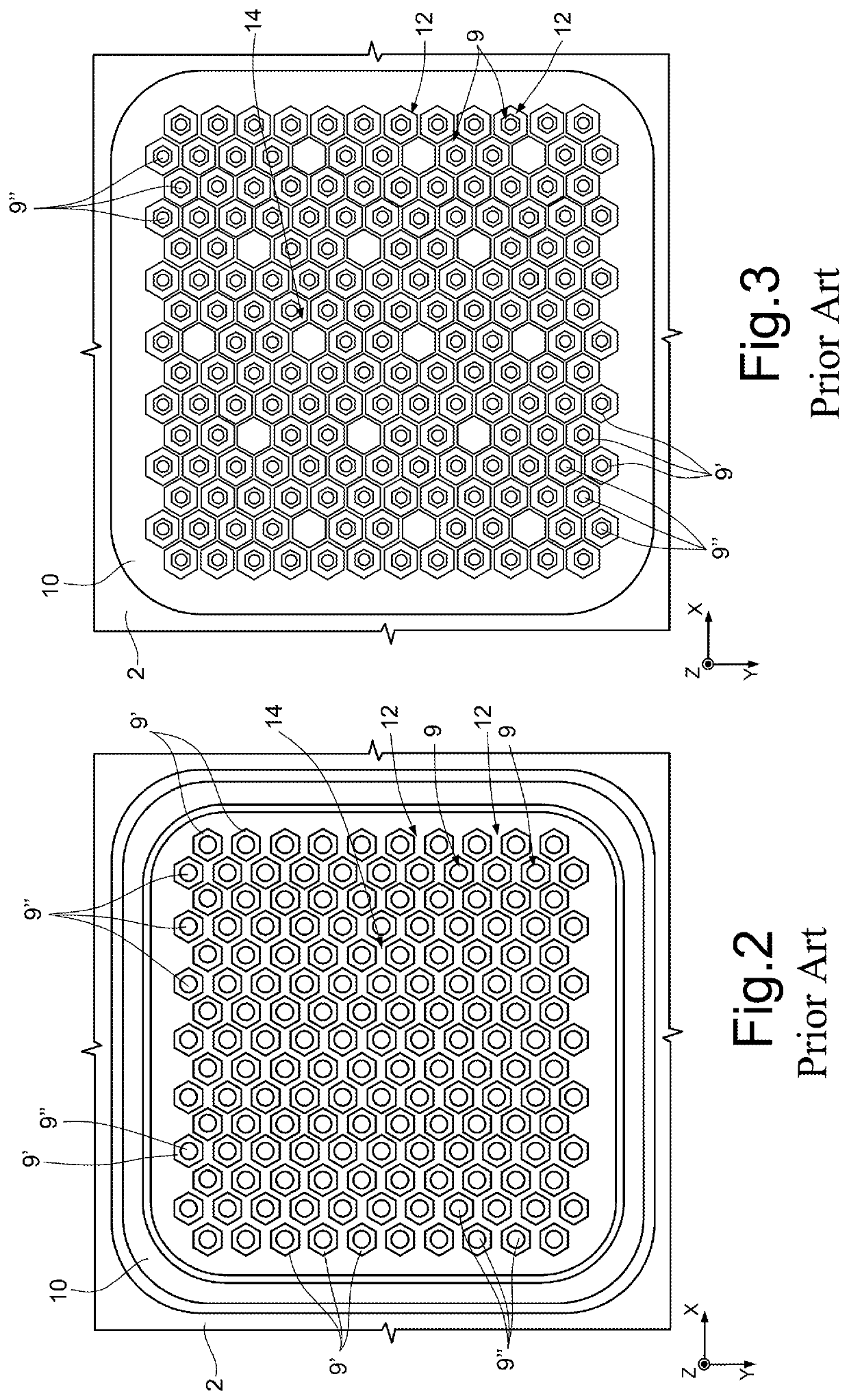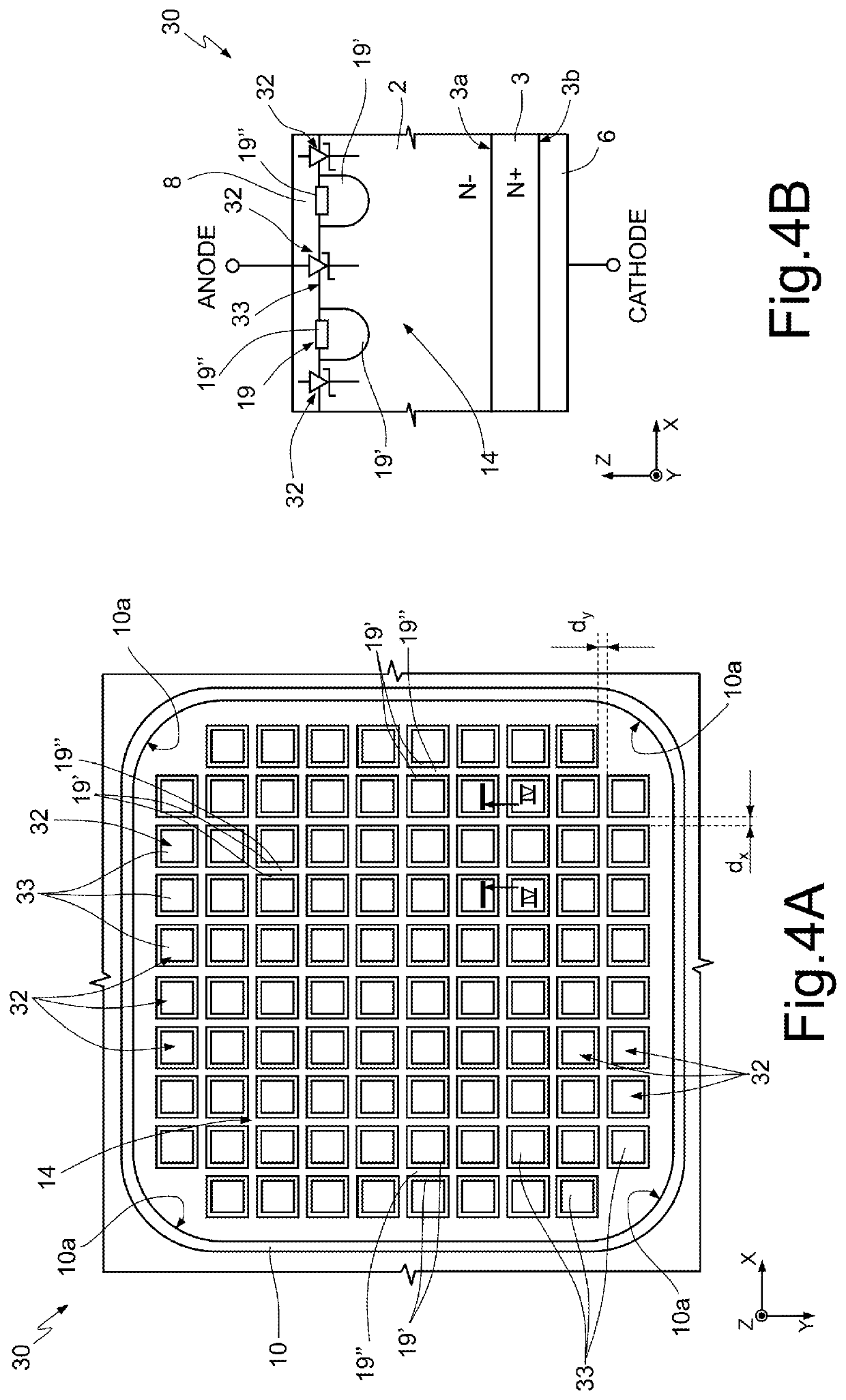Semiconductor MPS diode with reduced current-crowding effect and manufacturing method thereof
a technology of mps diodes and current-crowding effect, which is applied in the direction of diodes, semiconductor devices, electrical apparatus, etc., can solve the problems of failure of mps devices, failure of devices or thermomechanical devices, and cracks in dies, so as to reduce current-crowding
- Summary
- Abstract
- Description
- Claims
- Application Information
AI Technical Summary
Benefits of technology
Problems solved by technology
Method used
Image
Examples
Embodiment Construction
[0024]FIG. 4A shows, in the same reference system of axis X, Y, Z of FIGS. 1A-3, a top-plan view (i.e., on XY plane) of a Merged-PN-Schottky (MPS) device 30 (in particular, a MPS diode), according to an embodiment of the present invention. FIG. 4B shows, in the same reference system, a lateral sectional view taken along line IV-IV of FIG. 4A. To improve the understanding of FIG. 4A, the anode metallization 8 is not shown, even if present, as apparent from the view of FIG. 4B.
[0025]The lateral sectional view (i.e., on XZ plane) of FIG. 4B conforms substantially to that of FIG. 1B. Analogous elements are identified with the same reference numerals and not further described in detail.
[0026]However, when considering the top-plan view of FIG. 4A, the skilled person can appreciate that each Schottky diode 32 of a plurality of Schottky diodes 32 includes a respective Schottky cell (or dot) 33 having, in top-plan view on XY plane, a squared shape; the Schottky cells 33 are arranged in a gri...
PUM
| Property | Measurement | Unit |
|---|---|---|
| forbidden band gap | aaaaa | aaaaa |
| resistivity | aaaaa | aaaaa |
| resistivity | aaaaa | aaaaa |
Abstract
Description
Claims
Application Information
 Login to View More
Login to View More - R&D
- Intellectual Property
- Life Sciences
- Materials
- Tech Scout
- Unparalleled Data Quality
- Higher Quality Content
- 60% Fewer Hallucinations
Browse by: Latest US Patents, China's latest patents, Technical Efficacy Thesaurus, Application Domain, Technology Topic, Popular Technical Reports.
© 2025 PatSnap. All rights reserved.Legal|Privacy policy|Modern Slavery Act Transparency Statement|Sitemap|About US| Contact US: help@patsnap.com



